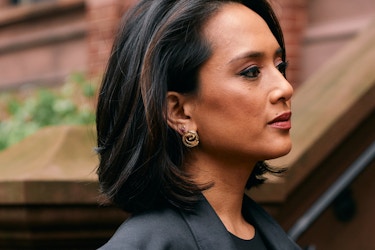Trending:
8 Small Business Month Events to Register for Now
Focus on your business by participating in virtual workshops and webinars in May.
Catch the Replay:
C-Suite to Main Street: Small Business Day 2025 [+ Full Video]
Apply Today
10 Reasons to Apply for the CO—100
The CO—100 is the U.S. Chamber of Commerce’s expanded small business awards program. Read on to find out more about the program and how to apply.
Tariffs
Events
Small Business Tariff Update: What to Know Now [+ Video]
U.S. Chamber of Commerce experts share the latest on trade tariffs and what small businesses should know.
Growth Studio
Tariffs on Imports Rocking Small Businesses as They Scramble to Adapt
Business owners say tariffs will impact their ability to grow and hire and are already making them less profitable.
Budding Entrepreneurs
250+ Business Ideas to Spark Inspiration
Explore opportunity with our collection of 250+ business ideas, crafted to inspire and guide aspiring entrepreneurs.
Working Late? You’re Not Alone
You’re short on time and busy putting out fires. Sign up for our newsletter, Midnight Oil, and find out what you need to know to adapt and thrive tomorrow.
Sign UpCO— BrandStudio
Latest—
5 Consumer Trends Shaping Spending Patterns in 2025
Businesses need to give wary consumers a reason to shop, and research shows they are responding to deals, convenience, personalized suggestions, and promotions.
CO—100 2025: Communications Toolkit
CO—100 applications are open! Join us in finding the top 100 businesses in America.
True Religion CMO on Tapping Into Cultural Touchpoints and Celebrity Fans to Win Over Gen Z and Become a Billion-Dollar Brand
The denim giant is working to bounce back from two bankruptcies with a strategy that capitalizes on early 2000s nostalgia and courts a broader customer base, Kristen D’Arcy tells CO—.
Cooking Convenience Trends Are Driving Sales for Food and Beverage Companies
Time-pressed consumers want restaurant-quality food at home, opening big opportunities for mixes, meal starters, kits, sauces, and other shortcuts — especially those with global flavors.
Fabletics President on Turning Online Shoppers Into Buyers
Social proof messaging boosts conversion rates for athleisure apparel brand, Ashley Kechter tells CO—.
How to Find Your Small Business Credit Score
Check your credit with one of the credit agencies to understand how well positioned your company is to get favorable interest rates.
START
STRATEGY
Free Small Business Resources for Entrepreneurs
Many organizations provide support and online tools for small business owners and employees. Take advantage of these free resources during Small Business Month and throughout the year.
START
STRATEGY
How to Grow Your Company During Small Business Month
Want to scale your business? Achieve your goals with these core growth strategies and activities.
RUN
TECHNOLOGY
Best Phone Systems for Small Businesses
Compare the top small business VoIP solutions and unified communications platforms using this in-depth guide on phone service features, pricing, and more.
Can a Business Owner Collect Unemployment?
There are unemployment benefits available to business owners, but the criteria for qualifying varies by state.






























